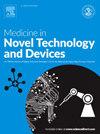Computational drug discovery of nitroimidazole compounds targeting Ddn protein of Mycobacterium tuberculosis: insights from QSAR modeling, ADMET, molecular docking, and molecular dynamics simulation studies
Q3 Medicine
引用次数: 0
Abstract
Still a major worldwide health issue, tuberculosis requires the development of new medicinal drugs. Computational techniques, including QSAR modeling, molecular docking, ADMET analysis, and molecular dynamics simulation, were used in this work, which examines the antitubercular potential of a nitroimidazole derivative targeting the Ddn protein of Mycobacterium tuberculosis. A multiple linear regression-based QSAR model (R2 = 0.8313, Q2LOO = 0.7426) created using QSARINS software shows strong prediction accuracy for anti-TB activity. Using molecular docking experiments (AutoDockTool 1.5.7), DE-5 compound was found to be the most promising molecule with a binding affinity of −7.81 kcal/mol and important hydrogen bonding interactions with active site residues PRO A:63, LYS A:79, and MET A:87. High bioavailability, good pharmacokinetics, and low toxicity risk were found by ADMET profiling (SwissADME). A 100 ns molecular dynamics simulation confirmed the stability of the DE-5-Ddn complex, as indicated by minimal Root Mean Square deviation, stable hydrogen bonds, low Root Mean Square Fluctuation, and compact structure reflected in Solvent Accessible Surface Area and radius of gyration values. Furthermore, MM/GBSA computations (−34.33 kcal/mol) confirmed a strong binding affinity and hence supporting DE-5's activity potential. These findings suggest that DE-5 is a suitable potential compound to advance the creation of new tuberculosis therapies targeting the Ddn protein. This work opens the path for logical drug design strategies in the TB battle.
靶向结核分枝杆菌Ddn蛋白的硝基咪唑化合物的计算药物发现:来自QSAR建模、ADMET、分子对接和分子动力学模拟研究的见解
结核病仍然是一个主要的世界卫生问题,需要开发新的药物。计算技术,包括QSAR建模、分子对接、ADMET分析和分子动力学模拟,在这项工作中,研究了靶向结核分枝杆菌Ddn蛋白的硝基咪唑衍生物的抗结核潜力。利用QSARINS软件建立的基于多元线性回归的QSAR模型(R2 = 0.8313, Q2LOO = 0.7426)对抗结核活性具有较强的预测精度。通过分子对接实验(AutoDockTool 1.5.7),发现DE-5化合物是最有希望的分子,其结合亲和力为−7.81 kcal/mol,并且与活性位点残基PRO a:63, LYS a:79和MET a:87有重要的氢键相互作用。通过ADMET分析(SwissADME)发现其生物利用度高,药代动力学良好,毒性风险低。通过100 ns的分子动力学模拟证实了DE-5-Ddn配合物的稳定性,表现为最小的均方根偏差,稳定的氢键,低的均方根波动,紧凑的结构反映在溶剂可及表面积和旋转半径值上。此外,MM/GBSA计算(−34.33 kcal/mol)证实了DE-5的强结合亲和力,因此支持DE-5的活性潜力。这些发现表明DE-5是一种合适的潜在化合物,可以促进针对Ddn蛋白的结核病新疗法的创造。这项工作为结核病斗争中的逻辑药物设计策略开辟了道路。
本文章由计算机程序翻译,如有差异,请以英文原文为准。
求助全文
约1分钟内获得全文
求助全文
来源期刊

Medicine in Novel Technology and Devices
Medicine-Medicine (miscellaneous)
CiteScore
3.00
自引率
0.00%
发文量
74
审稿时长
64 days
 求助内容:
求助内容: 应助结果提醒方式:
应助结果提醒方式:


